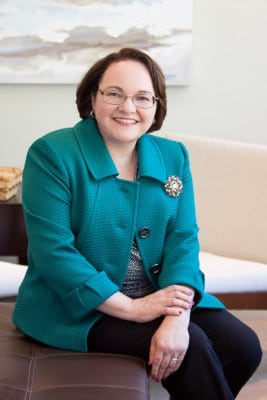The manufacturing industry in the United States lacks diversity. There are very few women and even fewer Latinos in an industry seeing job growth. We know this. But just wanting to see more women and Latinos in the manufacturing industry isn’t enough to make it happen. Neddy Perez knows this. The vice president of global diversity and inclusion at Ingersoll Rand is committed to doing all she can to make it a reality.
Ingersoll Rand is a diversified global company that provides products, services, and solutions to enhance the comfort of air in homes and buildings, transport, and to protect food and perishables. In her role, Perez leads the development and execution of the company’s diversity and inclusion strategy.

This strategy focuses on four key areas. The first involves building cultural awareness and manufacturing skills. The second aims to manage and develop processes, policies, and systems to remove organizational roadblocks in order to create an inclusive environment. The third promotes workforce engagement through employee resource groups (ERGs). The ERGs help drive market connectivity, focusing on connecting to the community, uncovering new market opportunities. The fourth part of the strategy is to support supplier diversity.
As one of two Hispanics with a high-profile manufacturing position and one of a handful of women, Perez had to overcome incredible odds to land where she is. She was persistent and driven by a passion to remove barriers.
“For me, this role provides a great balance of business acumen and human resources skills. I get to exercise a passion for helping business leaders address cultural barriers that might be getting in the way of them being more successful,” she said. “I’m a problem solver; I love puzzles and figuring out how things can work more effectively.”
According to Perez, one of the main reasons the number of Latinos and women in manufacturing is so small is because they aren’t pursuing science, technology, engineering and math (STEM) degrees. A recent study conducted by Deloitte for the Manufacturing Institute finds that over the next eight to ten years, more than 3.4 million new jobs will be created, but only 1.4 million will be filled, leaving 1.3 million open.
“If you take that into consideration with the growth of the Hispanic population there are some great career opportunities for Latinos, if they pursue degrees in STEM. The opportunities that exist are in critical fields of development not only in the US, but in other countries as well.”
The under representation of minorities and women in this space is what fueled her passion in launching the Shell Digital Divide Initiative more than 10 years ago and then work with the Houston Technology Center to help grow minority technology companies.
Five years ago, Perez and a social business entrepreneur developed an organization called STEMConnector.org, which serves as a one-stop information clearinghouse for all things related to STEM, including how to get scholarships.
Perez is deeply focused on doing her part to get more women into manufacturing. In 2015, she became chair of the Science Technology, Engineering, and Production (STEP) Ahead Award for women. The award was created by the Manufacturing Institute to acknowledge and recognize the contributions of women in the manufacturing industry.
“The stronger we make the female pipeline in the industry, the stronger manufacturing in the US will become.”
Perez even got her company involved with supporting the Institute’s work. She collaborated on a $135,000 grant awarded by the Ingersoll Rand Foundation to design and implement a leadership development program that would complement the award.
She is all too aware of the challenges involved in increasing female leadership in the industry. Two years prior, Perez had created a women’s leadership program for Ingersoll Rand that increased retention and promotion rates of its female talent. When approached by the Manufacturing Institute she asked, “Why don’t we take this award program to the next level? Why don’t we take what we’ve been doing as a company and create a leadership program for women in the industry?” Perez said. “The stronger we make the female pipeline in the industry, the stronger manufacturing in the US will become.” This year the first 130 women from across the US were recognized and completed the program.
Next up, Perez wants to do something similar within the Latino community. By bringing together other Latinos in senior roles in the manufacturing space. She’s also partnering with the Manufacturing Institute to put together a chief diversity officers in manufacturing summit and is also looking to put together a summit of chief HR executives in manufacturing.
“[The summits are] intended to help bring us all together and share best practices and try to address collectively the expected talent shortfalls in the workplace.”
Perez hasn’t seen many Latino-geared manufacturing initiatives on the national level, but rather than be frustrated by it, she sees it as another opportunity to step in and get things going herself.
“I really would like to find a way to mobilize these organizations and the existing Latinos in manufacturing to help promote awareness about the amazing career opportunities for Latinos,” she says. Perez anticipates the same level of success as the programs she has developed for women in manufacturing. “The only direction to go is forward,” says Perez.

